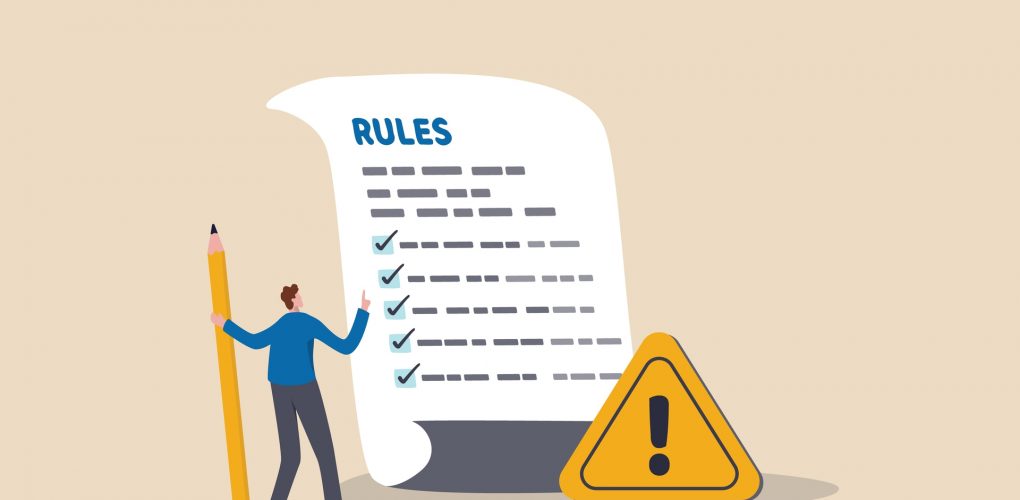Have you worked in the bridge industry for a long time?
You may have forgotten a few of the inherent “truths” of bridge design, inspection, maintenance, and construction.
Maybe you’re a newbie to the industry.
If that’s the case, you may appreciate a cheat sheet to inform your everyday work.
Either way, you’ll find value in our 10 commandments — or best practices — for people working in the bridge sector.
Commandment 1: Partner with the best people
You’re only as good as the people who work for you and whom you partner with. It’s always worth it to take additional time and invest more to find top talent. In the highly competitive bridge development space, organizations that don’t have the best-educated, most dedicated, and fiercely up-to-date people won’t succeed.
Don’t forget: Always treat the awesome people you currently work with well. In today’s highly charged job market, a top talent who feels slighted could be tempted to jump ship to a competitor.
Commandment 2: Thou shall never cheat the design
Good design and engineering are literally the foundation of successful bridge projects. A single slight cheat made early in developing a structure usually snowballs into serious issues that can impact the integrity of projects. Never take chances with design.
Don’t forget: Every bridge failure can be traced to a suboptimal design or engineering flaw. Check, recheck, and challenge your bridge designs to ensure that they’re as foolproof as they can be.
Commandment 3: Don’t believe anything, ever
Before working with anyone, with any firm, or on any project, check references, do an internet search, and read the fine print. Make sure everything checks out before moving forward. If it doesn’t, ask questions, do more homework, or walk away.
Don’t forget: It’s much easier to step away from questionable situations before they become formalized through deals and contracts. If you have doubts, resolve them or don’t get involved.
Commandment 4: Think long term
During the bridge construction boom of the 1960s and ‘70s, it was good enough for bridges to be designed and built for a 50-year useful life. That is no longer good enough today. Based on current climate, environmental, capacity, and economic realities, it’s essential to design, develop, and maintain bridges that last hundreds of years or more.
Don’t forget: You work hard every single day. Don’t you owe it to yourself to ensure that your bridge legacy lasts a thousand years or more?
Commandment 5: Planning must be a priority
Many organizations shy away from project planning and wing it. This is never the right way to do things. It’s inefficient and will likely result in costly mistakes and rework. Planning will help you identify errors and other issues before they happen. You should keep all these commandments, but this is one that you must make a top priority.
Don’t forget: A small investment in project management talent, training, systems, and software will pay off in big ways for your firm.
Commandment 6: Embrace the latest construction technologies
You may be concerned about trying new building methods, like Accelerated Bridge Construction, but you must overcome the mental hurdle. You probably feel safe going old school, but yesterday’s techniques could put you at more risk than embracing the present. Today’s modern methods are proven to be safe, long-lasting, and environmentally sound. Plus, they’re what people are looking for today.
Don’t forget: If you aren’t using contemporary construction techniques, your competitors could and will leave you in the dust in a few short years — or sooner.
Commandment 7: Trust tech more than yourself
Use wide-area laser scanners, radio frequency tags, and other equipment to check the physical placement and location of beams, bolts, and other construction components based on the designer’s plan. Measurements and physical checks are good, but tech is much more accurate.
Don’t forget: This is another area where if you don’t adapt to the future, you could become a relic of the past.
Commandment 8: Max out your use of tech
The bridge industry is notoriously slow in its use of the latest technology. Tech has improved every aspect of doing business in other sectors, and it can do the same for bridge designers, inspectors, contractors, and project planners. Whether it’s drones for inspections, software for design, 3D printing for modeling, or lifts for inspections, it’s time that people in the bridge industry leverage the power of technology to speed ahead in the 21st century.
Don’t forget: Technology truly is your friend.
Commandment 9: Plan ahead for emergencies
No one wants to think about things going wrong on a bridge construction or maintenance site or after a structure is complete. However, it’s critical to plan for emergencies before they happen. Work with an expert to prepare evacuation, rescue, and medical crisis plans before work starts or you open a bridge.
Don’t forget: It’s too late to develop an emergency plan when you’re experiencing one.
Commandment 10: Safety is priority number one
Above and beyond anything else, always make safety your top priority. Whether it’s bridge workers, inspectors, contractors, drivers, or pedestrians, your job is to keep people safe. That’s the case when a bridge is being built and long after it’s complete. From using the safest lifts and other equipment while building bridges to consistently inspecting them and looking for flaws after they’re in operation, safety is critical — no exceptions, ever.
Don’t forget: You will have to live with the consequences if someone’s safety is compromised on a bridge that you work(ed) on. Thinking about this every day will help ensure that you never forget to keep safety front and center.

